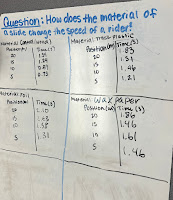Week 10 Blog Post
Lab: Our goal should be about relearning in coursework, not simply about how good our grade is. The earth has 5 layers of the earth. The Core and the Mantle are in the inner crust and those two are both very hot, which leads to a convection in the mantle. The core goes back to the surface. Along the surface, things need to be turned and ripped apart. We then used starbursts, and different heat sources to hopefully represent the different rocks in the rock cycle. The three we attempted to meet are Sedimentary, Igneous, and Metamorphic. It was fun to try and do different things and different kinds of melting to represent different kinds of rocks.
Lecture: Today we touched base and discussed the different layers of the earth again. We touched on the four main parts crust, mantle, inner core, and outer core. They are all set at different points and have different purposes and structures that have different goals. The Hawaii Hot Spot shares how the plate motions are shifting over time and moving between the different islands. Now turning our focus to the rock cycle: igneous rock, metamorphic rock, and sedimentary rock. Everything started as magma and represented being liquid. If the magma ends up cooling, then it turns into igneous rocks. From there it could undergo weathering and erosion which would then turn into sediments. (by breaking down our starburst with scissors we were representing weathering and erosion!) From here the sediments lead to sedimentary rocks through cementation that occurs. It all leads to one big cycle of things that creates all the different kinds of rocks. Extrusive exits earth cools fast and has small crystals. Intrusive is deep inside the earth, insulated by the earth, and maintains large crystals.

I again was reminded about what layers the earth is made up of. The outermost layer is called the crust. The next layer is the mantle which is between the crust and the core. This is the largest and thickest layer of the earth. After that are the final two layers which are the outer and inner core. The outer core is made up of iron and nickel so it is also very hot. The inner core is also made up of iron and nickel but this layer is solid due to the materials under huge pressure at the center of Earth. The crust is broken into many pieces called plates. There are two kinds of plates the continental and oceanic plates. It was helpful learning more about the plate types. Continental Plates are much thicker than oceanic plates. The ocean floor is far below the land and therefore oceanic plates are thinner than continental plates. I need more information on how all of these structures of the earth come together to work together hand in hand.


Comments
Post a Comment